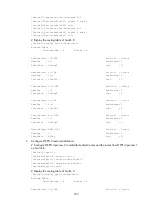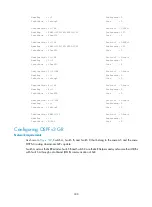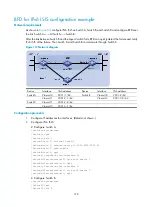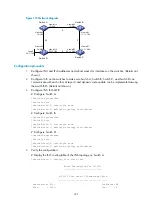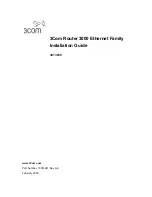
312
Figure 112
Network diagram
, the numbers refer to the link costs. Router A, Router B, and Router D support both IPv4 and
IPv6. Router C supports only IPv4 and cannot forward IPv6 packets.
Enable IPv6 IS-IS MTR on Router A, Router B, Router C, and Router D to make them perform route
calculation separately in IPv4 and IPv6 topologies. In this way, Router A will not forward IPv6 packets
destined to Router D through Router B to avoid packet loss.
Configuration prerequisites
Before configuring IPv6 IS-IS MTR, you must configure basic IS-IS functions, and establish IS-IS neighbors.
Configuration procedure
To configure IPv6 IS-IS MTR:
Step Command
Remarks
1.
Enter system view.
system-view
N/A
2.
Enter IS-IS view.
isis
[
process-id
] [
vpn-instance
vpn-instance-name
]
N/A
3.
Specify the cost style for IS-IS.
cost-style
{
narrow
|
wide
|
wide-compatible
| {
compatible
|
narrow-compatible
}
[
relax-spf-limit
] }
By default,
narrow
is adopted.
4.
Enable IPv6 IS-IS MTR.
multiple-topology ipv6-unicast
Disabled by default.
Displaying and maintaining IPv6 IS-IS
Task Command
Remarks
Display brief IPv6 IS-IS information.
display isis brief
[
|
{
begin
|
exclude
|
include
}
regular-expression
]
Available in any view
Display the status of the debug
switches.
display isis debug-switches
{
process-id
|
vpn-instance
vpn-instance-name
}
[
|
{
begin
|
exclude
|
include
}
regular-expression
]
Available in any view


